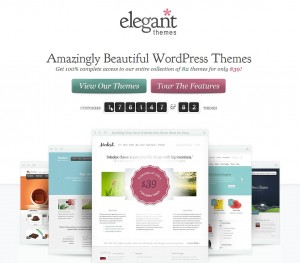 WordPress is remarkably simple to use when it comes to adding posts and pages, but things can get tricky quickly when you want to customize the design or create complex page layouts.
WordPress is remarkably simple to use when it comes to adding posts and pages, but things can get tricky quickly when you want to customize the design or create complex page layouts.
You can create custom WordPress designs in at least three ways:
1. Learn HTML, CSS, and at least a little PHP, and you can create your own themes, and customize the fonts, text styles, and image placement on pages and posts.
2. You can create composite images in Photoshop or another graphics program and then insert those graphics into your pages. This is not an ideal solution because text loads faster than images and you can get better search engine optimization when you use text. That said, many beautifully designed websites use composite images for at least some of the design elements. If you include Alternate text and Title text with any text that appears in the image when you insert the image into your web pages, you can still make the text readable to search engines.
3. An increasingly popular way to customize WordPress designs is to use themes that provide a framework, such as Elegant Themes, Genesis, StudioPress, Thesis, or any of the several others you can find by searching the web.
Frameworks are like themes with extra special back-end features that make it easier to change the banner, background, fonts, and other settings without having to edit the CSS or other code. Some frameworks offer just a few customization options, others, such as Thesis themes, are highly customizable (and it can take a little time to learn to use all of the features they add on to WordPress).
Each framework offers different strengths and weaknesses. For example, Elegant Themes are beautifully designed, but Thesis themes provide more customization options.
The best themes are not free and framework themes are among the most expensive, but most are still less than $100, and compared to hiring a programmer, that’s extremely reasonable. If you’re exploring options, you may want to try two or three theme frameworks to see how they work and which suits your taste, skills, and workflow.
Whatever framework you choose, make sure you look for themes that use the responsive design approach so that your website or blog works on small smart phone screens, as well as large monitors.
In my creativeLIVE course: Creating Websites the Easy Way with WordPress, I provide an overview of themes and frameworks and demo a few different options to help you find the best solution for your site.
You can order my 2-day creativeLIVE course at http://www.creativelive.com/courses/wordpress-101-janine-warner
